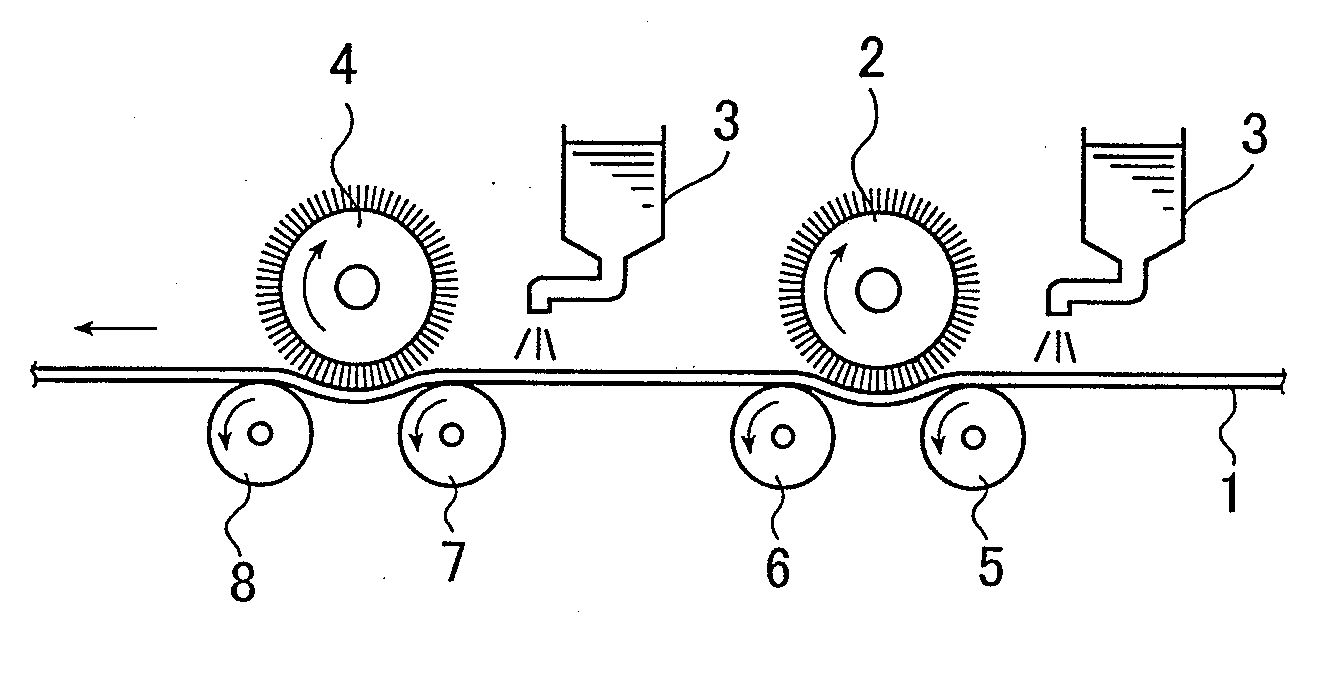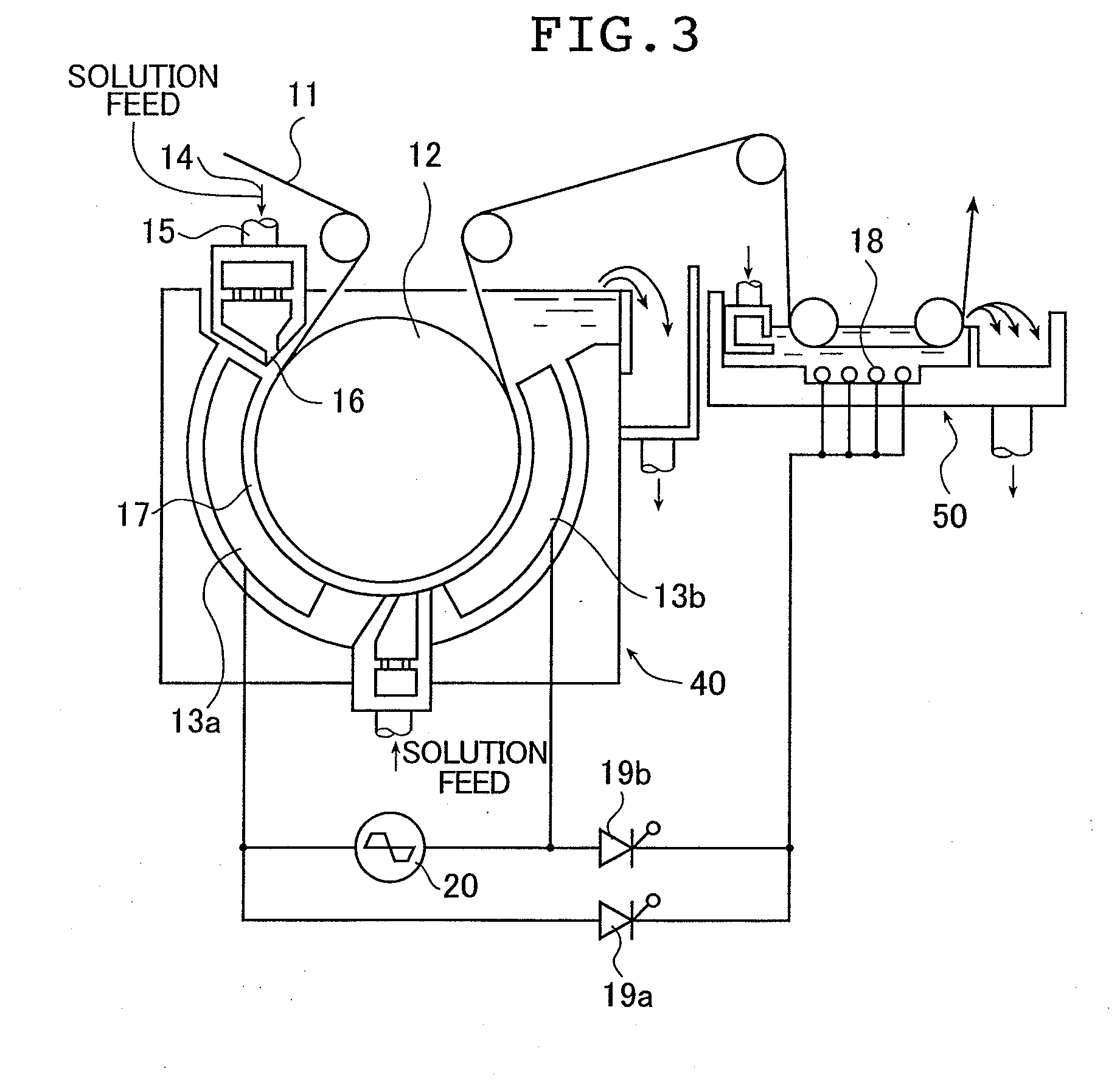Support For Lithographic Printing Plate and Presensitized Plate
a technology of lithographic printing plate and plate support, which is applied in the direction of photomechanical equipment, instruments, manufacturing tools, etc., can solve the problems of inability to provide both excellent scumming resistance and very long press life, and the image recording layer undergoes wear, etc., and achieves excellent scumming resistance and long press life.
- Summary
- Abstract
- Description
- Claims
- Application Information
AI Technical Summary
Benefits of technology
Problems solved by technology
Method used
Image
Examples
example 1
Aluminum Sheet
[0253]A melt was prepared from an aluminum alloy composed of 0.06 wt% silicon, 0.30 wt% iron, 0.005 wt% copper, 0.001 wt% manganese, 0.001 wt% magnesium, 0.001 wt% zinc and 0.03 wt% titanium, with the balance being aluminum and inadvertent impurities. The aluminum alloy melt was subjected to molten metal treatment and filtration, then was cast into a 500 mm thick, 1,200 mm wide ingot by a direct chill casting method. The ingot was scalped with a scalping machine, removing an average of 10 mm of material from the surface, then soaked and held at 550° C. for about 5 hours. When the temperature had fallen to 400° C., the ingot was rolled with a hot rolling mill to a thickness of 2.7 mm. In addition, heat treatment was carried out at 500° C. in a continuous annealing furnace, following which cold rolling was carried out to a final thickness of 0.24 mm, thereby giving a sheet of JIS 1050 aluminum. Cold rolling was carried out with a metal-rolling roll having on the surface ...
example 2
[0264]Aside from setting the rolling reduction in cold rolling during production of the aluminum sheet to 8%, a lithographic printing plate support was obtained by the same method as in Example 1.
example 3
[0265]Aside from setting the rolling reduction in cold rolling during production of the aluminum sheet to 5%, a lithographic printing plate support was obtained by the same method as in Example 1.
PUM
| Property | Measurement | Unit |
|---|---|---|
| equivalent circle diameter | aaaaa | aaaaa |
| equivalent circle diameter | aaaaa | aaaaa |
| depth | aaaaa | aaaaa |
Abstract
Description
Claims
Application Information
 Login to View More
Login to View More - R&D
- Intellectual Property
- Life Sciences
- Materials
- Tech Scout
- Unparalleled Data Quality
- Higher Quality Content
- 60% Fewer Hallucinations
Browse by: Latest US Patents, China's latest patents, Technical Efficacy Thesaurus, Application Domain, Technology Topic, Popular Technical Reports.
© 2025 PatSnap. All rights reserved.Legal|Privacy policy|Modern Slavery Act Transparency Statement|Sitemap|About US| Contact US: help@patsnap.com



